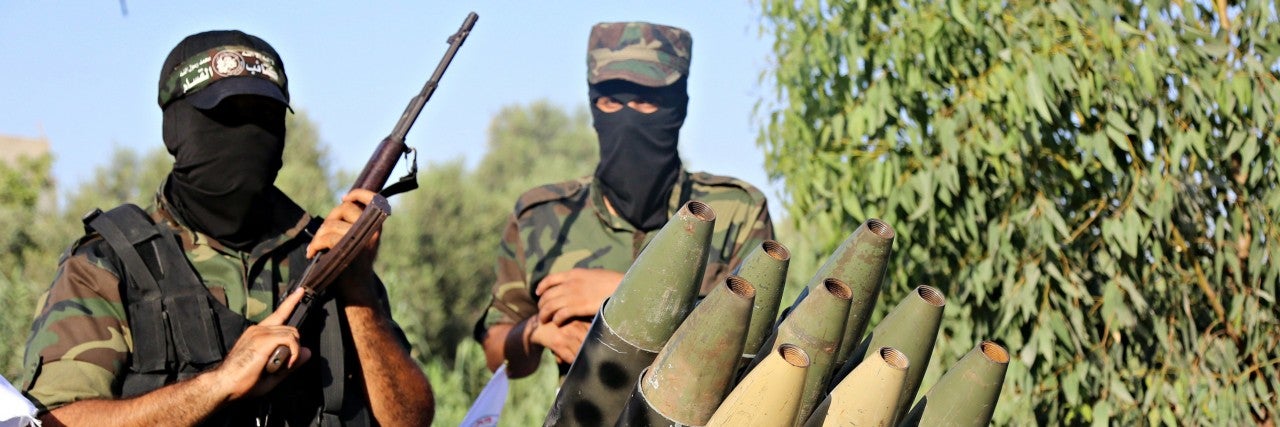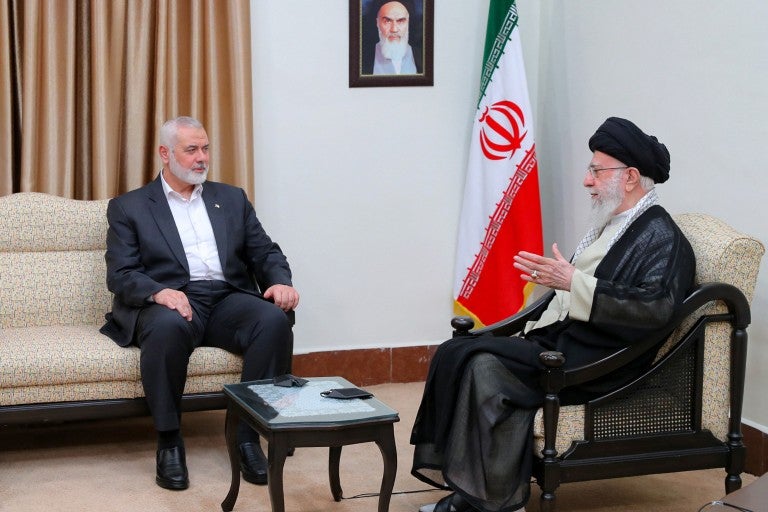November 8, 2019
Since Israel withdrew from Gaza in 2005, more than 15,000 rockets have been fired from the coastal region into the Jewish state. Conflicts erupted in 2008 and 2012 and boiled over in 2014 during a seven-week standoff initiated by the abduction and murder of three Israeli teenagers.
In the past year alone, there have been at least a dozen exchanges of rocket fire between Israeli forces and Hamas operatives. Most of the flareups have ended with a ceasefire brokered by Egypt. Now, with an interim Israeli government in place until a coalition can be formed, Hamas has resumed its attacks.
So why don’t the ceasefires last and why won’t the vicious cycle end?
For an answer, one need only look to 2005 when Israel withdrew from Gaza and pulled out thousands of Israeli soldiers and civilians, leaving behind resources to support a potential Palestinian state. According to an agreement brokered by the United States, a seaport and airport was to have been be constructed in Gaza. The U.S. also pledged $50 million to the Palestinian Authority for new housing and infrastructure in the territory.
Israelis left behind key economic development infrastructure, including greenhouses. The greenhouses, purchased by U.S. envoy James Wolfensohn for Palestinian civilian use, were looted and destroyed almost immediately.
Then, in 2006, Gazans elected Hamas.
Electing terrorists didn’t help
Hamas, which has governed the Gaza Strip since violently overthrowing the Fatah-led Palestinian Authority in 2007, is a terrorist regime bent on establishing an Islamic state and murdering Jews. It is responsible for scores of suicide bombings and has launched thousands of rockets aimed at killing Israelis, though support for these tactics among Gazans has slipped over time. A 2014 study by the Pew Research Center showed 46 percent of Gazans supported the use of suicide bombings against Israeli civilians, down from 70 percent in 2007. Hamas also commits what many refer to as a “double war crime” by attacking Israeli civilians from the midst Palestinian residential areas, cynically using Palestinian civilians as human shields and drawing Israeli retaliation that inadvertently results in Palestinian civilian deaths.
Gazans originally voted Hamas into power after rumors took hold that the Palestinian Authority had misspent millions of dollars intended to build a Palestinian state. But Hamas has done much of the same. Instead of channeling funds toward improving the quality of life in the coastal enclave, Hamas has remained mission-focused – prioritizing the deaths of Israelis above the lives of Palestinians. Last year, the terrorist regime spent $260 million – mostly tax money – to manufacture rockets and dig a network of tunnels to sneak arms and militants into the Gaza Strip and from Gaza into Israel. Meanwhile, many Gazans lack potable water and electricity and the unemployment rate hovers above 50 percent.
Gazans have little recourse. Protests are hidden from journalists, naysayers are silenced, and the terrorist regime won’t allow another election.
Hamas Likes to Flex Its Muscle
When Hamas doesn’t get its way or wants to reopen negotiations for aid, it flexes its muscles with rockets. Experts say violence has erupted in the past over late payments from Qatar and delays in reopening the borders between Gaza and Israel.
Hamas also provokes violent riots at the border with Israel, then points to Israel as the enemy when people get hurt.
When Hamas instigated the March of Return in 2018, it lured many protesters, under false pretenses, to rush the border fence, which they said had already been breached. They also said Israeli forces were retreating as Palestinians flooded into Israel. None of that was true, so when protesters tried to cross, many were unexpectedly met with force.
But although Israel maintains several formal border crossings and facilitates the movement of thousands of people and thousands of truckloads of goods in and out of Gaza every week, the border between Israel and Gaza is the only one that allows the movement of people and materials at all. The Rafah border crossing between Egypt and the Gaza Strip – the only non-Israeli passageway to and from Gaza – only allows people to cross, and it is often closed. The transportation of goods and materials is forbidden. And Israel is by far not the only enemy of Hamas – the terrorista non grata of the Middle East.
Its relationships with United Arab Emirates, Saudi Arabia, and other Palestinian factions, including the Palestinian Authority, are adversarial at best. Hamas tries to deflect attention from its isolation by pointing to the enemy next door and firing rockets with increasing frequency.
Starting a full-fledged war would not end well for Hamas. So they opt to inflict death by a thousand rockets to flex their biceps. All-out war would do irreparable damage to Gaza that would be hard to hide. It also would illustrate that no one came to Hamas’s aid.
Hamas: No, Thanks. Our People Can Suffer.
Over the past decade, there have been promising solutions proposed by American, Israeli, European, and Palestinian experts, business figures, and politicians. But almost all of the proposals call for Hamas to disarm, a condition the terrorist group refuses to even consider. After all, armed resistance is a key part of their identity and ideology.
In 2017, Israel proposed building both an airport and a seaport in Gaza and creating industrial zones that would employ thousands of Palestinians. Hamas had to agree to disarm and return the bodies of captured Israeli soldiers. It declined.
In 2018, Israel proposed setting up a seaport in Cyprus to aid the delivery of food, potable water, and other necessities to the Gaza Strip in exchange for two kidnapped Israeli citizens and the remains of two IDF soldiers. But Hamas would not agree unless Israel released dozens of prisoners, many with blood on their hands, held since 2014.
Meanwhile, living conditions in Gaza continue to plummet, prompting the United Nations to declare that the territory will become unlivable by 2020. The UN High Commissioner for Human Rights has cited mistreatment of the Palestinians by the “de facto authorities” in Gaza for the last decade; not one credible investigation of how Hamas abuses its power has taken place.


